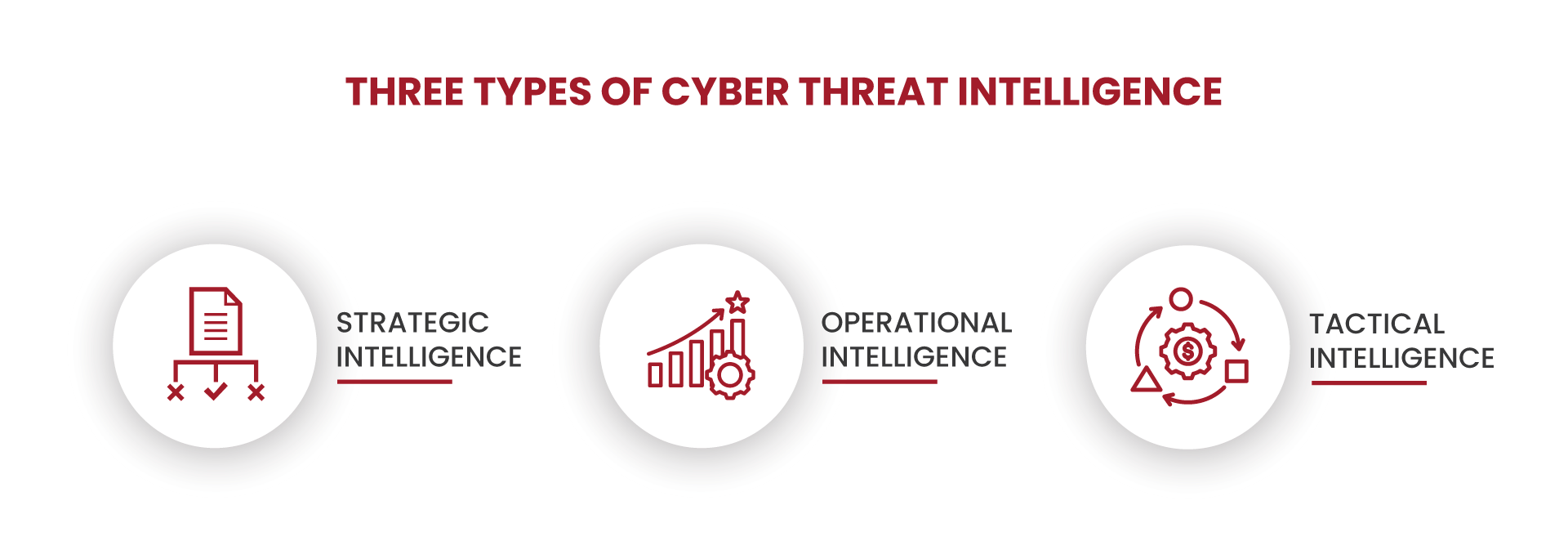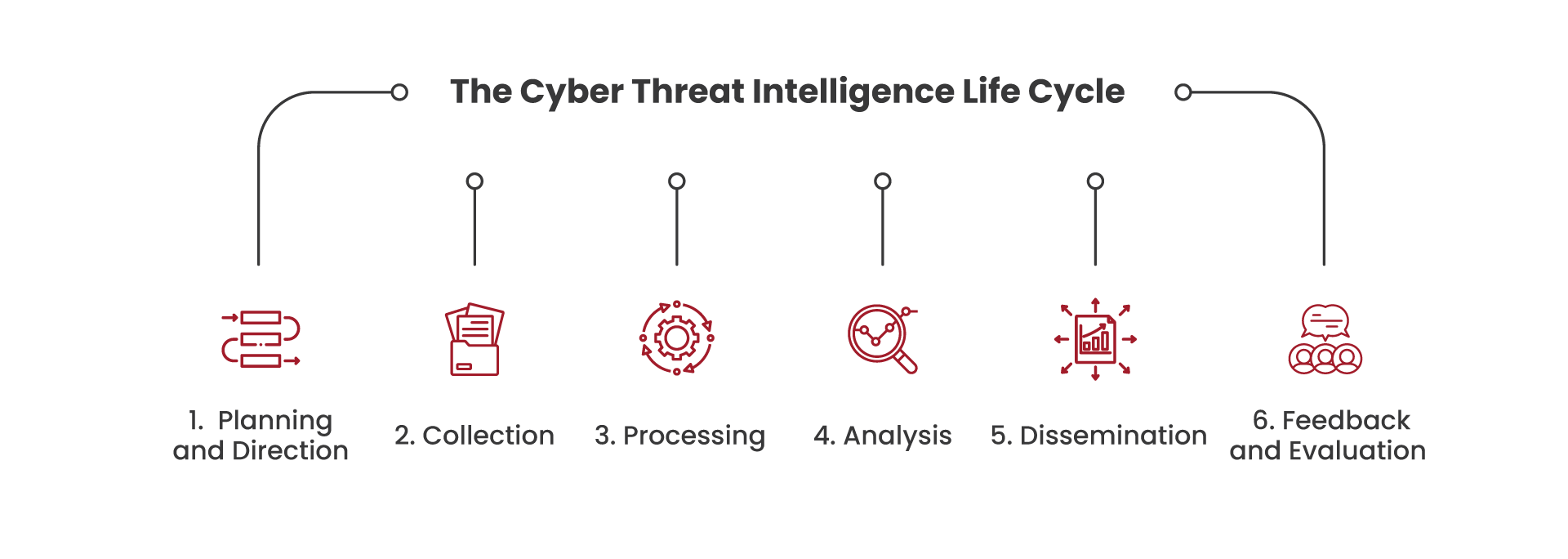We are living in a world where artificial intelligence (AI) is transforming eve....
What Is Cyber Threat Intelligence?

Organizations face a relentless barrage of cyber threats. In fact, according to chief information security officers (CISO), in 2023, three in four companies in the United States were at risk of a material cyber-attack. From sophisticated malware to state-sponsored attacks, the cyber landscape is fraught with dangers that can compromise sensitive data, disrupt operations, and inflict substantial financial losses.
To address these evolving threats, businesses and governments are increasingly turning to cyber threat intelligence (CTI). But what exactly is CTI, and why is it critical in modern cybersecurity?
What Is Threat Intelligence in Cybersecurity?
Cyber Threat Intelligence (CTI) is the process of collecting, analyzing, and distributing information about potential or current cyber threats. This intelligence is used to inform decisions at both the tactical and strategic levels, helping organizations to proactively defend against cyber-attacks. CTI provides insights into the tactics, techniques, and procedures (TTPs) of threat actors, as well as indicators of compromise (IOCs) such as malicious IP addresses, URLs, and email addresses.
The Components of Cyber Threat Intelligence
CTI can be broadly categorized into three types:
-
Strategic Intelligence:
- Purpose: Offers a high-level overview of the threat landscape, focusing on long-term trends, geopolitical factors, and emerging threats.
- Audience: Executives, policymakers, and senior management.
- Use Case: Informing cybersecurity strategy and investment decisions.
-
Operational Intelligence:
- Purpose: Provides information on specific threats and incidents that are currently active or imminent.
- Audience: Security operations center (SOC) analysts and incident responders.
- Use Case: Assisting in the detection and response to active threats.
-
Tactical Intelligence:
- Purpose: Delivers detailed technical information on the TTPs used by threat actors.
- Audience: Security analysts, threat hunters, and IT staff.
- Use Case: Enhancing the detection capabilities of security tools and guiding the implementation of defensive measures.

The Importance of Cyber Threat Intelligence
The significance of CTI cannot be overstated. Here are some key reasons why CTI is essential:
-
Proactive Defense:
- By understanding the threat landscape, organizations can anticipate and mitigate potential attacks before they occur.
- CTI enables the implementation of preventive measures such as patching vulnerabilities and updating security protocols.
-
Informed Decision-Making:
- CTI provides actionable insights that help executives and security teams make informed decisions about resource allocation, risk management, and incident response.
- Strategic CTI can guide long-term cybersecurity investments and policy-making.
-
Enhanced Detection and Response:
- Operational and tactical intelligence improve the efficiency and effectiveness of threat detection and incident response.
- SOC analysts and incident responders can prioritize their efforts based on the severity and likelihood of threats.
-
Threat Actor Profiling:
- CTI helps in profiling threat actors, understanding their motives, capabilities, and methods.
- This knowledge is crucial for developing targeted defense strategies and attributing attacks to specific groups or individuals.
Cyber Threat Intelligence: The WannaCry Ransomware Attack
In May 2017, the WannaCry underscored the critical importance of cyber threat intelligence (CTI) in cybersecurity. This global incident, exploiting a vulnerability in Windows systems, highlighted the necessity for organizations to stay informed about potential threats. CTI involves gathering and analyzing data to predict and counteract cyber threats effectively.
Post-WannaCry, there was an increased focus on proactive threat hunting, real-time threat intelligence sharing, and collaboration between private and public sectors to enhance defensive measures and mitigate future risks.
Sources of Cyber Threat Intelligence
CTI is derived from various sources, each contributing unique insights into the threat landscape. These sources include:
-
Open Source Intelligence (OSINT):
- Publicly available information from news articles, blogs, forums, and social media.
- Government and industry reports, advisories, and white papers.
-
Technical Intelligence (TECHINT):
- Data from network traffic analysis, malware analysis, and vulnerability assessments.
- Information from honeypots, sandbox environments, and threat intelligence platforms.
-
Human Intelligence (HUMINT):
- Insights from human sources, including threat researchers, analysts, and informants.
- Information gathered from interviews, conferences, and threat actor communications.
-
Internal Intelligence:
- Data from internal security systems such as firewalls, intrusion detection systems (IDS), and endpoint detection and response (EDR) tools.
- Incident reports, security logs, and forensic investigations.
The CTI Lifecycle
The CTI lifecycle is a structured process that ensures the effective generation, analysis, and utilization of threat intelligence. It comprises the following stages:
-
Planning and Direction:
- Define intelligence requirements based on organizational objectives and threat landscape.
- Establish priorities and allocate resources for intelligence activities.
-
Collection:
- Gather raw data from various intelligence sources.
- Use automated tools and manual methods to collect relevant information.
-
Processing:
- Filter, normalize, and aggregate the collected data.
- Convert raw data into a usable format for analysis.
-
Analysis:
- Examine the processed data to identify patterns, trends, and anomalies.
- Assess the credibility, reliability, and relevance of the information.
-
Dissemination:
- Share the analyzed intelligence with stakeholders through reports, alerts, and briefings.
- Ensure timely and secure distribution to relevant parties.
-
Feedback and Evaluation:
- Gather feedback from intelligence consumers to assess the effectiveness of the CTI program.
- Continuously refine and improve the CTI processes based on feedback and evolving threats.

Challenges in Cyber Threat Intelligence
Despite its benefits, CTI faces several challenges:
-
Data Overload:
- The vast amount of data generated can overwhelm analysts and hinder effective decision-making.
- Advanced analytics and automation are needed to manage and prioritize information.
-
Quality and Reliability:
- Ensuring the accuracy and reliability of intelligence is critical.
- Collaboration with trusted sources and continuous validation of information are necessary.
-
Timeliness:
- Rapidly evolving threats require real-time or near-real-time intelligence.
- Delayed intelligence can result in missed opportunities to prevent or mitigate attacks.
-
Integration and Collaboration:
- Effective CTI requires collaboration between different teams, departments, and external partners.
- Integrating CTI into existing security operations and workflows can be complex.
Best Practices for Effective CTI
To maximize the value of CTI, organizations should adopt the following best practices:
-
Establish Clear Objectives:
- Define what you aim to achieve with CTI and align it with your overall cybersecurity strategy.
- Set specific, measurable, achievable, relevant, and time-bound (SMART) goals.
-
Leverage Automation and AI:
- Use automation and artificial intelligence (AI) to handle large volumes of data and identify critical threats.
- Implement machine learning algorithms to detect patterns and anomalies.
-
Foster Collaboration:
- Promote information sharing and collaboration within the organization and with external partners.
- Participate in threat intelligence sharing communities and industry groups.
-
Continuously Update and Refine:
- Regularly update your intelligence sources, tools, and methodologies to keep pace with evolving threats.
- Conduct periodic reviews and assessments of your CTI program.
-
Invest in Training and Skills Development:
- Provide ongoing training for your security team to enhance their CTI capabilities.
- Encourage certification and professional development in threat intelligence.
How Can PECB Help?
PECB offers a wide range of cybersecurity training courses designed to address the needs of professionals at different levels, from beginners to advanced practitioners. These training courses are developed by industry experts and are regularly updated to reflect the latest trends, standards, and best practices in cybersecurity.
Some of the main cybersecurity training courses offered by PECB are:
- Cybersecurity Management Training Courses
- Certified Cyber Threat Analyst (CCTA) Training Courses
- Cloud Security Training Course
- Penetration Testing Professional Training Course
- Ethical Hacking Training Course
Conclusion
Cyber threat intelligence is a vital component of modern cybersecurity. By providing insights into the ever-changing threat landscape, CTI enables organizations to proactively defend against cyber threats, make informed decisions, and enhance their detection and response capabilities. While challenges exist, adopting best practices and leveraging advanced technologies can help organizations harness the full potential of CTI.
About the Author
Vlerë Hyseni is the Senior Digital Content Specialist at PECB. She is in charge of doing research, creating, and developing digital content for a variety of industries. If you have any questions, please do not hesitate to contact: support@pecb.com.


